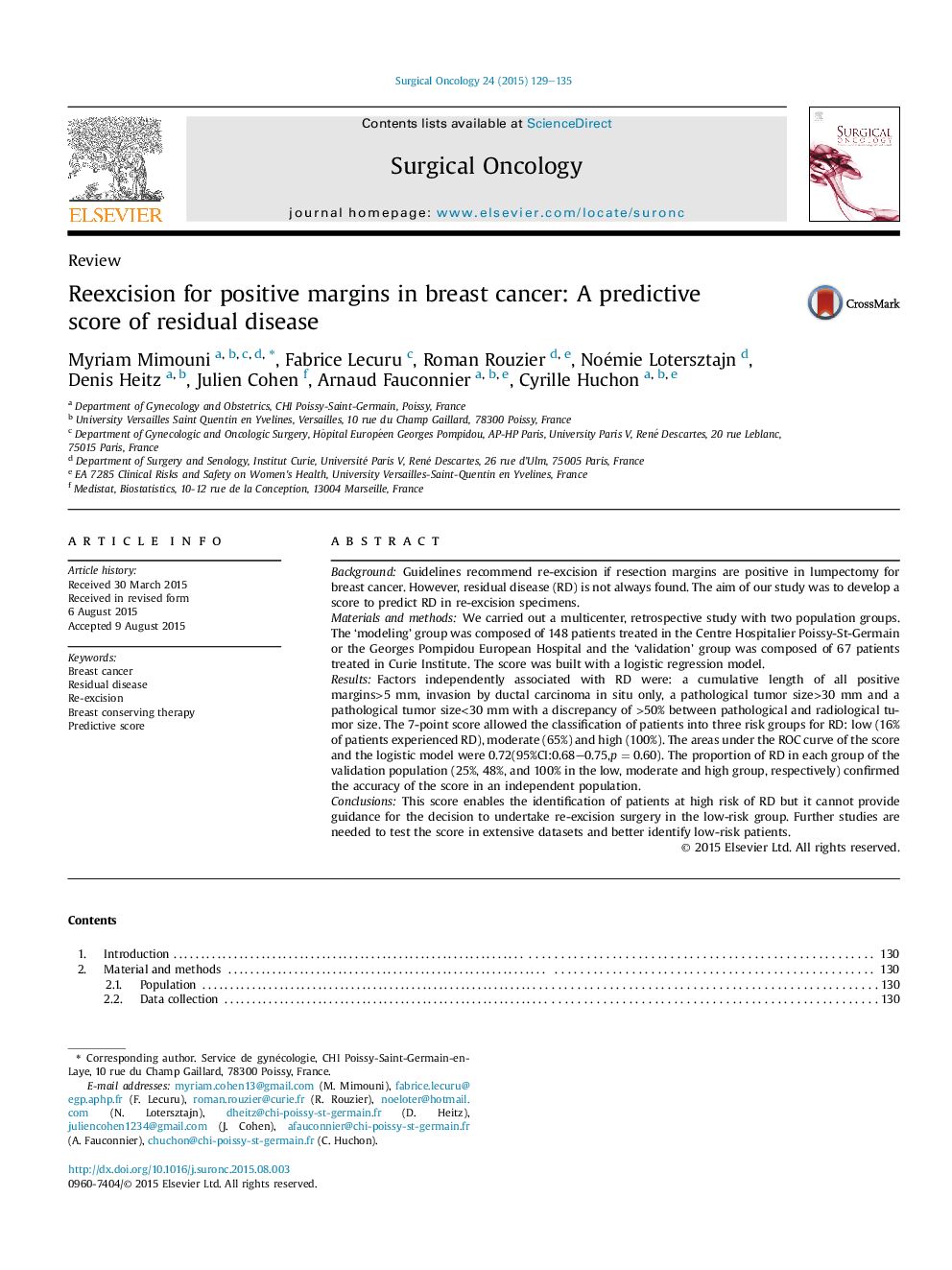| کد مقاله | کد نشریه | سال انتشار | مقاله انگلیسی | نسخه تمام متن |
|---|---|---|---|---|
| 3997666 | 1259166 | 2015 | 7 صفحه PDF | دانلود رایگان |

• This is a multicenter retrospective study (254 patients).
• We developed a score to predict the presence of residual disease after reexcision.
• It identifies 3 risk groups to have residual disease based on 4 predictors.
• We validated it in an independent population.
BackgroundGuidelines recommend re-excision if resection margins are positive in lumpectomy for breast cancer. However, residual disease (RD) is not always found. The aim of our study was to develop a score to predict RD in re-excision specimens.Materials and methodsWe carried out a multicenter, retrospective study with two population groups. The ‘modeling’ group was composed of 148 patients treated in the Centre Hospitalier Poissy-St-Germain or the Georges Pompidou European Hospital and the ‘validation’ group was composed of 67 patients treated in Curie Institute. The score was built with a logistic regression model.ResultsFactors independently associated with RD were: a cumulative length of all positive margins>5 mm, invasion by ductal carcinoma in situ only, a pathological tumor size>30 mm and a pathological tumor size<30 mm with a discrepancy of >50% between pathological and radiological tumor size. The 7-point score allowed the classification of patients into three risk groups for RD: low (16% of patients experienced RD), moderate (65%) and high (100%). The areas under the ROC curve of the score and the logistic model were 0.72(95%CI:0.68–0.75,p = 0.60). The proportion of RD in each group of the validation population (25%, 48%, and 100% in the low, moderate and high group, respectively) confirmed the accuracy of the score in an independent population.ConclusionsThis score enables the identification of patients at high risk of RD but it cannot provide guidance for the decision to undertake re-excision surgery in the low-risk group. Further studies are needed to test the score in extensive datasets and better identify low-risk patients.
Figure optionsDownload high-quality image (157 K)Download as PowerPoint slide
Journal: Surgical Oncology - Volume 24, Issue 3, September 2015, Pages 129–135